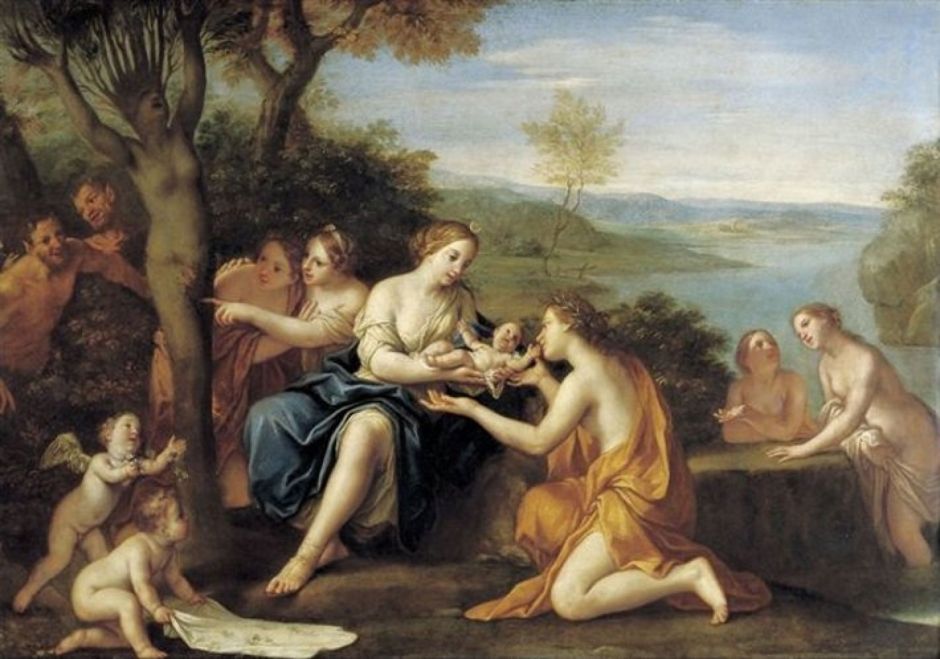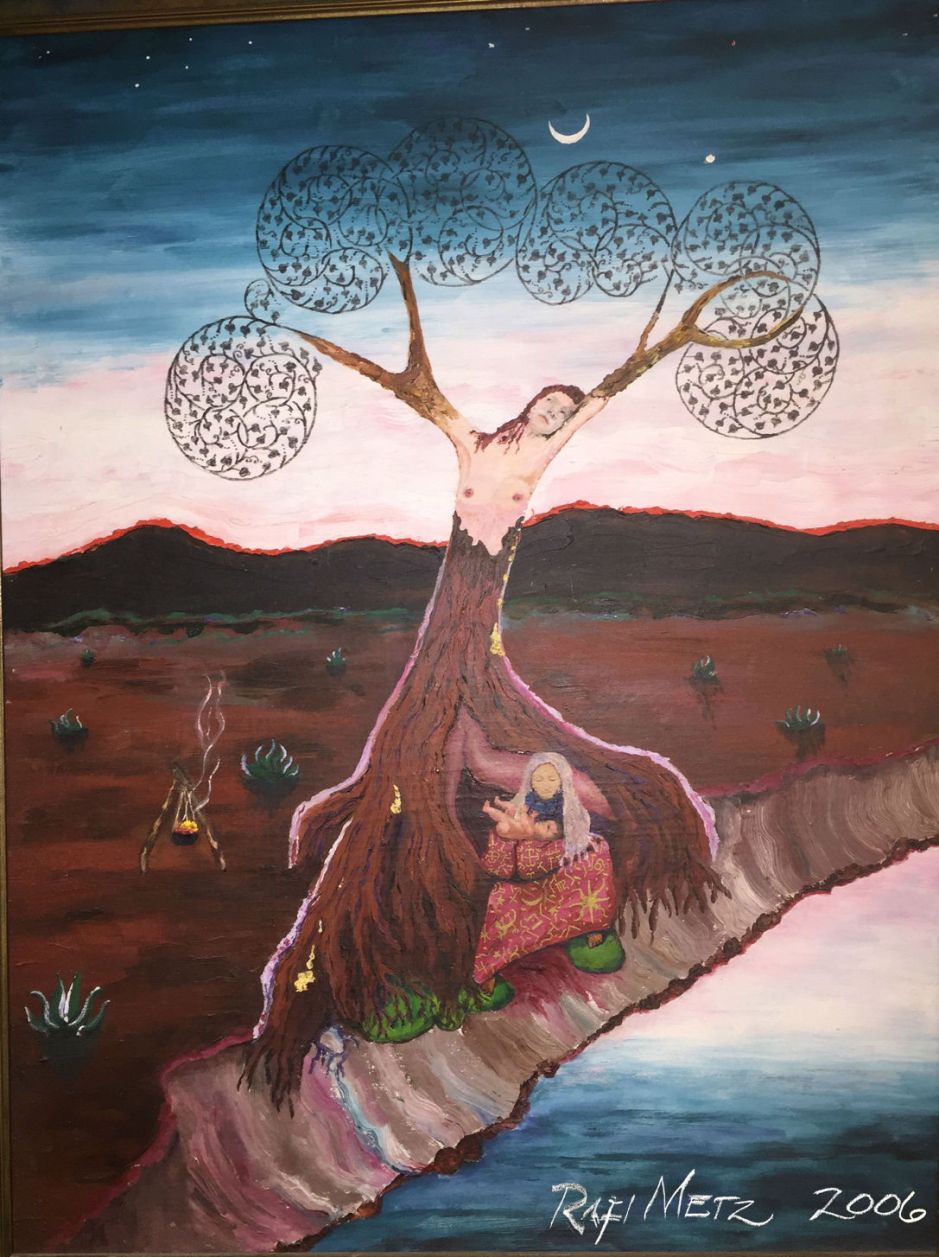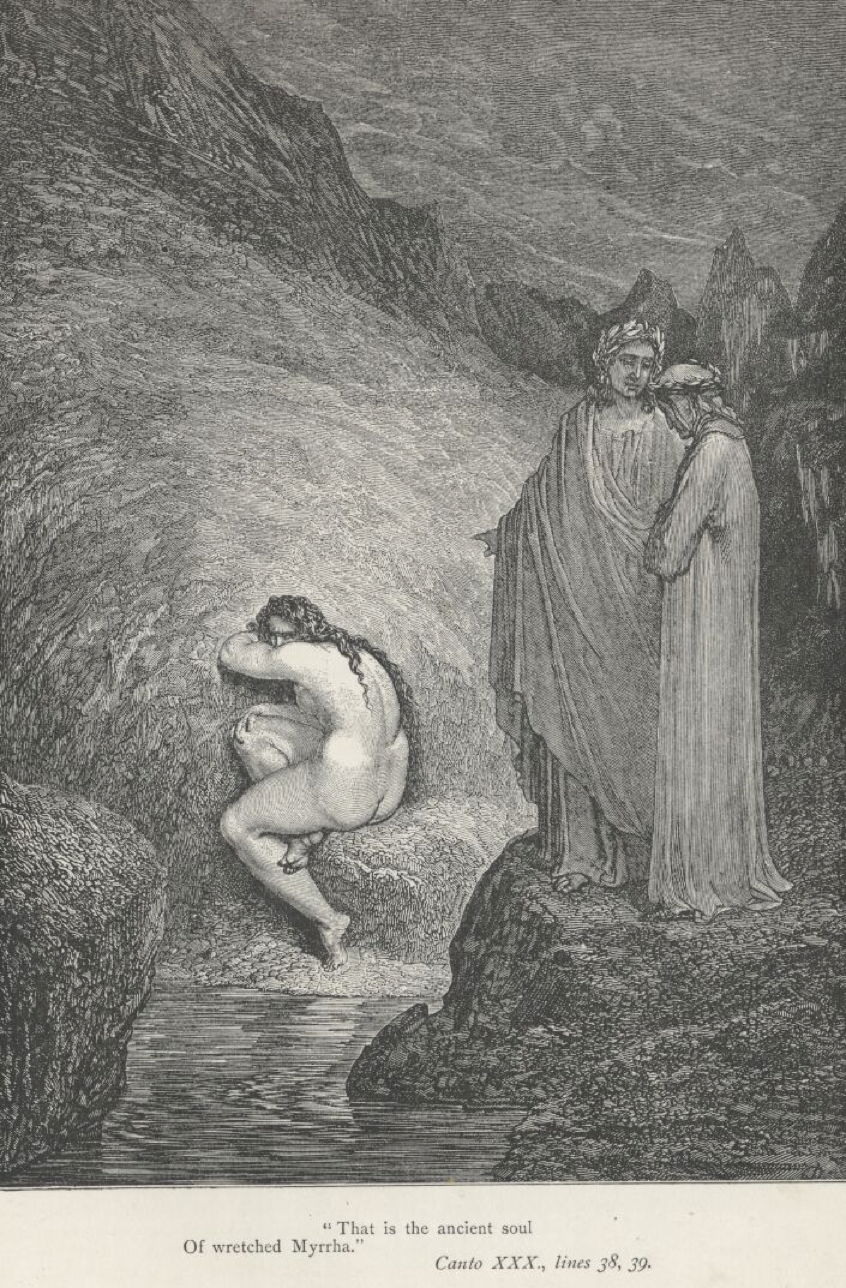One of the more opaque traditions of Christmas is the presentation of gifts by three eastern monarchs, supposedly the basis for all that is so commercial about the modern secular ‘feast’. Those three kings brought with them gold, frankincense and myrrh. The first we all wish we could be more familiar with, the second already declares itself to be used in incense and perfumes, but what is myrrh, and how did it become associated with the Christian nativity? In this article and the next, I’ll show you some paintings which help explain myrrh and its curious associations.
Like frankincense, myrrh is a natural resin obtained from trees, which has been used since ancient times as incense, in perfumes, and as a medicine. Myrrh trees are small, tough and quite thorny, and grow in the dry and barren areas from Ethiopia and Somalia up into the Arabian Peninsula. In traditional medicine, myrrh is primarily used for its antiseptic properties, and has been widely applied to wounds as well as used in oral care.
In classical Mediterranean mythology, the myrrh tree was generated by the transformation of a woman named Myrrha, the great granddaughter of Pygmalion. She was cursed by the Fates and blighted in love; despite having many suitors, she fell in love with her father, King Cinyras. When her father asked her what to do about her suitors, she first stayed silent, then burst into tears, eventually telling him that she wanted a husband like her father.
That night she lay awake in bed, her mind in turmoil, until resolving that her only solution was suicide. She tied a noose around a beam in her bedroom, and was just about to hang herself from it when her old nurse came in. Myrrha confessed her shameful desire, and her nurse promised to arrange the matter for her.
When the festival of Ceres came, Cenchreis, Myrrha’s mother, was busy with her duties, allowing the old nurse to arranged Myrrha’s liaison with her father. The nurse ensured that Cinyras had plenty to drink, and promised him a night making love to a girl as young as his daughter.
Later that night, the old nurse took Myrrha to her father, and put her to bed with him, from which Myrrha became pregnant. Myrrha and her father continued to sleep together, night after night, Cinyras remaining oblivious of the true identity of his partner. Eventually, he brought in a lamp so that he could see her, and was shocked to discover his own daughter.
He drew his sword to kill her, but she fled and wandered in the desert until it was time for her child to be born. Myrrha called on the gods to help her, but wanted to neither live nor die. She was therefore transformed into the myrrh tree, to provide the precious resin from her sap. But she had another very important role to play, as she was pregnant. When the time came for her to be delivered, even as a tree, her baby was the beautiful Adonis, and was promptly anointed with myrrh from his mother.
Surprisingly, the story of Myrrha, her incestuous pregnancy, and the birth of Adonis was popular both in words and images. There are several different accounts in classical sources, but it has been seldom re-told in more modern times.

This classical fresco from the Golden House of Nero in Rome shows one version of the story of the birth of Adonis, with Lucina, goddess of childbirth, presenting Venus (Aphrodite), who stands clutching the top of a myrrh tree, with the newborn infant.
Although an apparently difficult story to present to pious Christians, it was also quite a popular subject for paintings between 1500-1700. Thereafter it has been shunned.

Possibly one of Titian’s earliest works, although this is disputed and even Giorgione has been credited, this cassone panel of The Birth of Adonis probably dates from 1505-10. At the left, Myrrha and her father Cinyras lie together, although this would make certain his knowledge of her identity, of course. In the centre, a baby is delivered from the woody womb of Myrrha, as a tree. This multiplex narrative is set in an idyllic rustic landscape.

At about the same time, Bernardino Luini painted his fresco account of The Birth of Adonis (1509-10), which also looks to adopt multiplex narrative to explain the shameful origin of Myrrha’s pregnancy. In the foreground, the couple are shown together (although this could instead be a reference to Adonis in later life), and at the top left the miraculous birth has just taken place.

Over a century later, this wonderful panel was painted, possibly after Luigi Garzi, although again its maker is disputed. In The Birth of Adonis and Transformation of Myrrha reference to Myrrha’s dark past has been concealed, and she is here shown as a chimera between woman and tree, with the infant Adonis just delivered by a large team of midwives and maids.
The helper at the right wears a coronet with the crescent moon on it, signifying the goddess Diana. On the left side of the tree, one of the other helpers is holding up a tray with a small container of myrrh, with which to anoint Adonis. In the foreground, a wingless putto is laying out a napkin for the infant.
One artist painted this story repeatedly: Marcantonio Franceschini, a Baroque painter in the Italian city of Bologna.

This version of Franceschini’s The Birth of Adonis probably dates from around 1685-90, and is now in Dresden. Myrrha is a distinctive cross between tree and woman, and a couple of satyrs are laughing in the bushes behind her. Two young women are rather pointedly looking in amazement at the origin of Myrrha’s baby. In the centre, Adonis is being given by Diana, with her crescent moon, to Venus, who stars in his later life, and is already admiring his beauty.

Franceschini’s later version from around 1692-1709 is now in Vienna, and re-arranges a similar composition in a vertical format. Here Diana is handing Adonis over to another goddess, possibly Venus, who is preparing to take the role of wet-nurse. Behind them, the two women looking in amazement appear to be less anatomically engaged, and Pan and a satyr are providing some celebratory music. The napkin-bearing putto is here a winged Cupid.
Apart from a slightly later painting by Boucher, which I have been unable to illustrate here, those seem to have been the last paintings of this disturbing story of the origins of myrrh, and of Adonis, until recently.

Contemporary artist Rafael Metz’s The Transformation of Myrrh and the Birth of Adonis (2006) shows only the last part of the story, as the infant is being cradled by another woman, under the chimeric tree of Myrrha with its ornate and decorative branches. Already exuding from the bark is myrrh resin.
Myrrha is one of many figures from classical mythology who makes an appearance in Dante’s Inferno. When Dante is guided by the ghost of Virgil into the tenth rottenpocket of the eighth circle of Hell, who should they encounter but the grieving Myrrha, who is afflicted with madness not for her sin of incest, but for her deceit.

Mad Myrrha is shown in this engraving made from Gustave Doré’s drawings for his illustrated edition of the Inferno from about 1857.
Tomorrow I will look at how Christian traditions have incorporated myrrh into their own narratives, and abandoned its associations with incest and metamorphosis.

